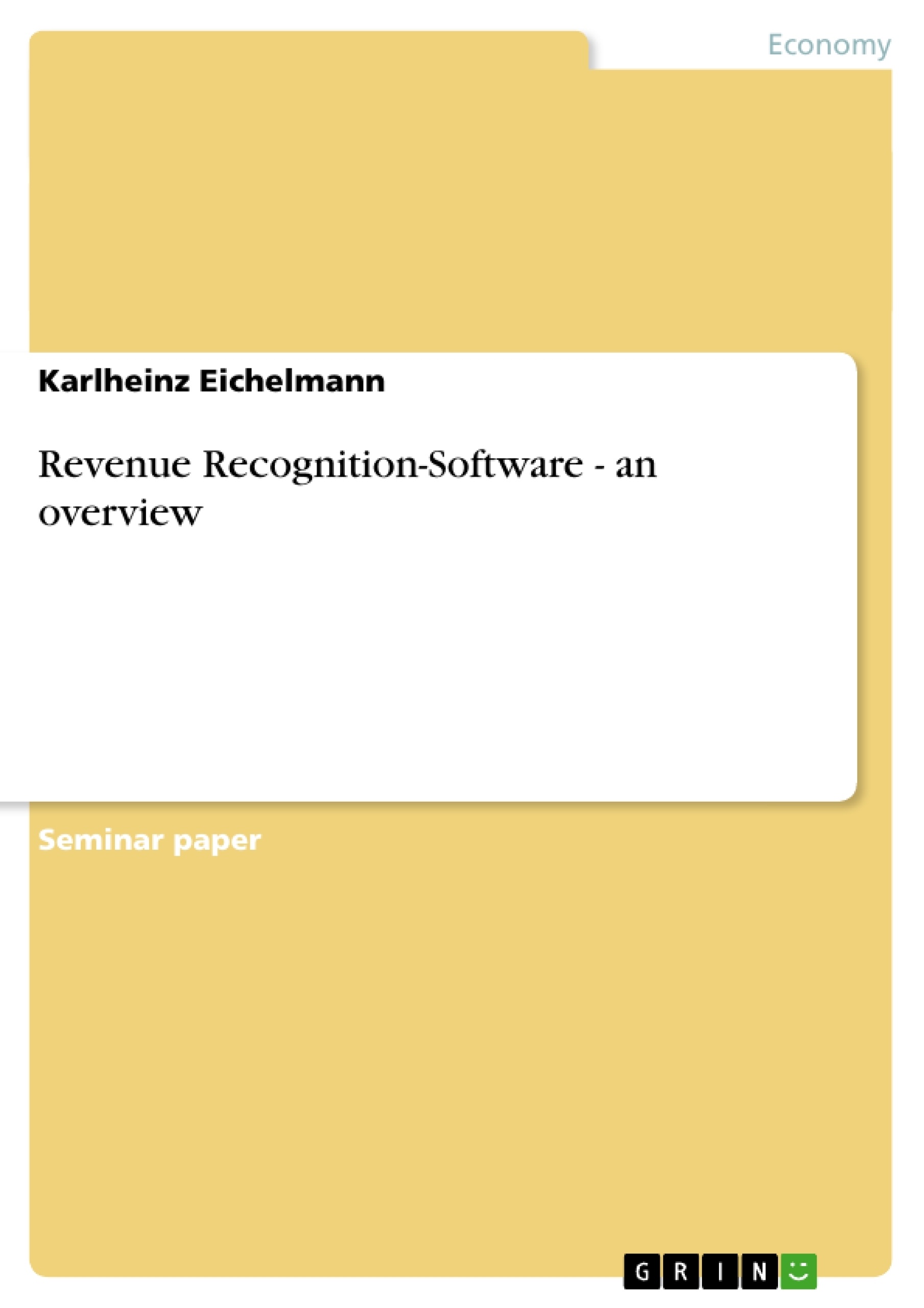Several years ago software vendors had the possibility to implement very different accounting practices for their financial statements especially in the area of revenue recognition. About 15% of the companies, covered by a survey of ADAPSO in 1983, took use of the ability to blow up revenue and recognized it early upon signing of the contract. Since then the rules have changed a lot. New accounting standards were introduced and software companies are now limited in how and when they can recognize revenue. This leads to the ability to compare financial statements among competitors more easily and reflects the current financial condition in a better way. The aim of this paper is to provide an overview about US-GAAP’s regulations of software revenue recognition. Therefore the criteria of SOP 97-2 and SOP 98-9 are explained and multiple-element arrangements are also described in detail.
Inhaltsverzeichnis (Table of Contents)
- Introduction
- Meaning of revenue recognition
- Regulations in the software industry
- Scope of SOP 97-2 and SOP 98-9
- Basic principles
- Evidence of arrangement
- Delivery of product
- Fixed or determinable fee
- Collectibility is probable
- Multiple-element arrangements
- Implications of vendor-specific objective evidence
- Postcontract customer support
- Services
- Additional software products
- Additional rules
- Summary
Zielsetzung und Themenschwerpunkte (Objectives and Key Themes)
This paper provides an overview of US-GAAP's regulations for software revenue recognition, focusing on the relationship between software vendors and end-users. It examines how revenue recognition has evolved from earlier practices to current standards and explores the implications for financial reporting and comparisons between competitors.
- Historical evolution of software revenue recognition practices
- Current US-GAAP regulations for software revenue recognition
- Impact of these regulations on financial reporting and analysis
- Challenges of revenue recognition in the software industry
- The role of vendor-specific objective evidence in revenue recognition
Zusammenfassung der Kapitel (Chapter Summaries)
- Introduction: This chapter provides a brief history of software revenue recognition practices, highlighting the shift towards stricter standards and the importance of accurate financial reporting.
- Meaning of Revenue Recognition: This chapter defines revenue recognition and its underlying principles, emphasizing the concepts of earning and realization. It discusses how revenue is recognized when goods are sold or services are performed.
- Regulations in the Software Industry: This chapter explores the specific regulations for software revenue recognition within US-GAAP. It delves into the scope of SOP 97-2 and SOP 98-9, outlining the key principles of revenue recognition in the software industry.
Schlüsselwörter (Keywords)
This paper focuses on US-GAAP, software revenue recognition, vendor-specific objective evidence, multiple-element arrangements, postcontract customer support, and the financial reporting implications of these regulations. It examines the impact of accounting standards on the ability to compare financial statements and provides insights into the current state of software revenue recognition practices.
- Citar trabajo
- Karlheinz Eichelmann (Autor), 2004, Revenue Recognition-Software - an overview, Múnich, GRIN Verlag, https://www.grin.com/document/43646



